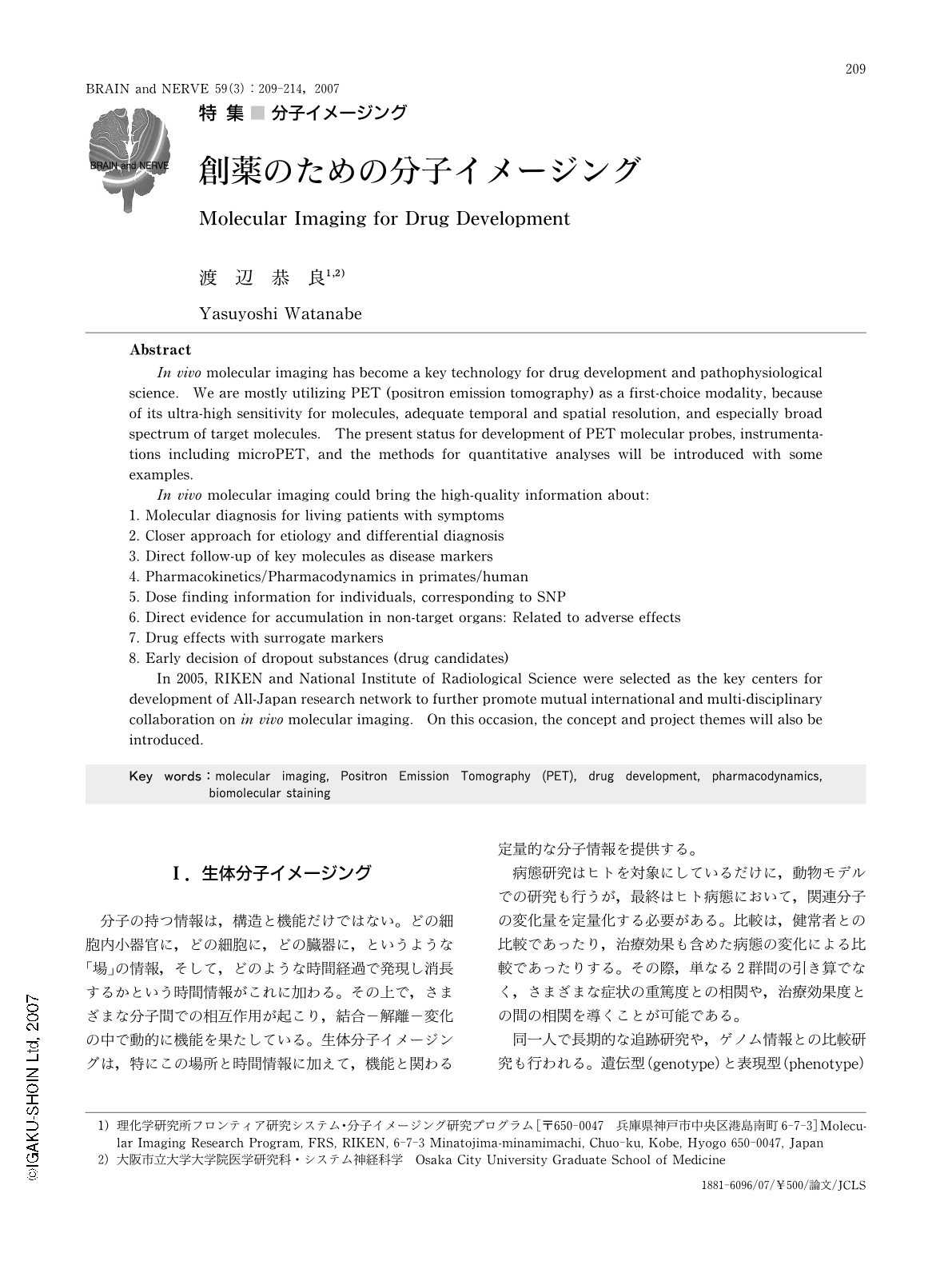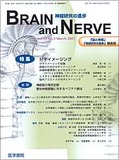Japanese
English
- 有料閲覧
- Abstract 文献概要
- 1ページ目 Look Inside
- 参考文献 Reference
I.生体分子イメージング
分子の持つ情報は,構造と機能だけではない。どの細胞内小器官に,どの細胞に,どの臓器に,というような「場」の情報,そして,どのような時間経過で発現し消長するかという時間情報がこれに加わる。その上で,さまざまな分子間での相互作用が起こり,結合-解離-変化の中で動的に機能を果たしている。生体分子イメージングは,特にこの場所と時間情報に加えて,機能と関わる定量的な分子情報を提供する。
病態研究はヒトを対象にしているだけに,動物モデルでの研究も行うが,最終はヒト病態において,関連分子の変化量を定量化する必要がある。比較は,健常者との比較であったり,治療効果も含めた病態の変化による比較であったりする。その際,単なる2群間の引き算でなく,さまざまな症状の重篤度との相関や,治療効果度との間の相関を導くことが可能である。
Abstract
In vivo molecular imaging has become a key technology for drug development and pathophysiological science. We are mostly utilizing PET (positron emission tomography) as a first-choice modality, because of its ultra-high sensitivity for molecules, adequate temporal and spatial resolution, and especially broad spectrum of target molecules. The present status for development of PET molecular probes, instrumentations including microPET, and the methods for quantitative analyses will be introduced with some examples.
In vivo molecular imaging could bring the high-quality information about:
1. Molecular diagnosis for living patients with symptoms
2. Closer approach for etiology and differential diagnosis
3. Direct follow-up of key molecules as disease markers
4. Pharmacokinetics/Pharmacodynamics in primates/human
5. Dose finding information for individuals, corresponding to SNP
6. Direct evidence for accumulation in non-target organs: Related to adverse effects
7. Drug effects with surrogate markers
8. Early decision of dropout substances (drug candidates)
In 2005, RIKEN and National Institute of Radiological Science were selected as the key centers for development of All-Japan research network to further promote mutual international and multi-disciplinary collaboration on in vivo molecular imaging. On this occasion, the concept and project themes will also be introduced.

Copyright © 2007, Igaku-Shoin Ltd. All rights reserved.


